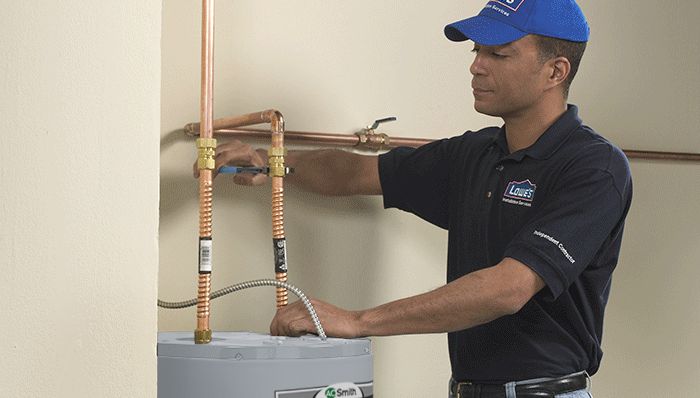Effective Techniques for Maintaining Your Home's Hot Water SystemWays to Properly Care for Your Home's Hot Water SystemEffective Ways to Maintain Your Home's Hot Water System Effectively
Click HereHave you been hunting for facts concerning Tips For Maintaining Your Hot Water Heater?

Hot water is vital for day-to-day convenience, whether it's for a refreshing shower or cleaning recipes. To guarantee your warm water system runs successfully and lasts much longer, regular maintenance is crucial. This write-up provides useful pointers and insights on how to preserve your home's warm water system to stay clear of disturbances and expensive repair services.
Intro
Preserving your home's warm water system may appear overwhelming, yet with a couple of simple actions, you can guarantee it runs efficiently for many years ahead. This overview covers every little thing from recognizing your hot water system to DIY maintenance tips and knowing when to hire expert help.
Significance of Keeping Your Warm Water System
Normal upkeep not just prolongs the life expectancy of your warm water system but also ensures it operates efficiently. Neglecting maintenance can lead to decreased effectiveness, greater power expenses, and even premature failure of the system.
Signs Your Hot Water System Requirements Maintenance
Knowing when your hot water system requires focus can stop major issues. Keep an eye out for indications such as inconsistent water temperature, strange sounds from the heating unit, or rustic water.
Flushing the Water Heater
Flushing your hot water heater eliminates sediment buildup, boosting effectiveness and extending its life.
Monitoring and Replacing Anode Rods
Anode rods protect against rust inside the tank. Inspecting and changing them when worn is critical.
Facility Problems Requiring Specialist Assistance
Examples include significant leaks, electrical troubles, or if your hot water heater is continually underperforming.
Regular Expert Upkeep Conveniences
Professional upkeep can include comprehensive evaluations, tune-ups, and ensuring conformity with safety criteria.
Inspecting and Readjusting Temperature Setups
Changing the temperature setups makes sure optimal efficiency and security.
Do It Yourself Tips for Maintenance
You can execute a number of upkeep tasks on your own to maintain your warm water system in top problem.
Checking for Leakages
Routinely evaluate pipes and links for leaks, as these can bring about water damage and greater costs.
Comprehending Your Warm Water System
Before diving into maintenance jobs, it's helpful to comprehend the standard components of your warm water system. Typically, this includes the water heater itself, pipelines, anode poles, and temperature level controls.
Regular Monthly Upkeep Tasks
Regular month-to-month checks can help catch small issues prior to they rise.
Checking Stress Relief Valves
Checking the stress relief valve guarantees it operates properly and prevents excessive pressure build-up.
Insulating Pipes
Insulating hot water pipes minimizes warmth loss and can conserve power.
When to Call a Professional
While DIY maintenance is beneficial, some issues require expert experience.
Conclusion
Regular maintenance of your home's hot water system is necessary for performance, long life, and price financial savings. By following these suggestions and understanding when to look for specialist aid, you can make sure a reliable supply of hot water without unexpected disruptions.
How to Maintain an Instant Hot Water Heater
Before tinkering with your hot water heater, make sure that it’s not powered on. You also have to turn off the main circuit breaker and shut off the main gas line to prevent accidents. Also turn off the water valves connected to your unit to prevent water from flowing into and out of the appliance. 2. When you’re done, you have to detach the purge valves’ caps. These look like the letter “T” and are situated on either side of the water valves. Doing so will release any pressure that has accumulated inside the valves while at the same time avoid hot water from shooting out and burning your skin. 3. When the purge valves’ caps are removed, you have to connect your hosing lines to the valves. Your unit should have come with three hoses but if it didn’t, you can purchase these things from any hardware or home repair shops. You can also get them from retail stores that sell water heating systems. Read the user’s manual and follow it to complete this task properly. When the hosing lines are connected, open the purge port’s valves. 4. You should never use harsh chemical cleaners or solutions when cleaning your unit. Make use of white vinegar instead. It should be undiluted and you’ll probably use about 2 gallons. 5. Now flush your water heater. This task should probably take about 40 minutes. We can’t give you specific directions for this because the procedure is carried out depending on the type, model and brand of your heater. With that being said, refer to the user’s manual. 6. When you’re done draining the unit, you have to turn off the purge port valves again. Remove the hosing lines that you earlier installed on each of the water valves. Put the valve caps (purge port) back in their respective places and be very careful so as not to damage the rubber discs that are found inside these caps. 7. Now that everything’s back in place, check your user’s manual again to find out how to reactivate your water heating system. 8. Once it is working, turn one of your hot water faucets on just to let air pass through the heater’s water supply pipes. Leave the tap on until water flows smoothly out of it. https://www.orrplumbing.com/blog/2014/september/how-to-maintain-an-instant-hot-water-heater/

I came across that review about Tips on Maintaining a Water Heater when doing research the search engines. Enjoyed reading our article? Please quickly share it. Let someone else discover it. I cherish your readership.
About